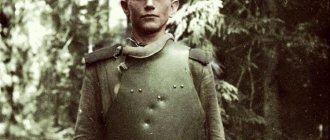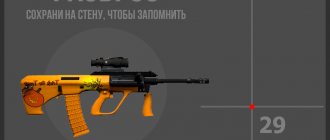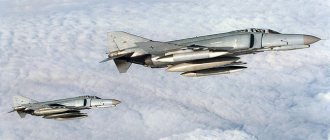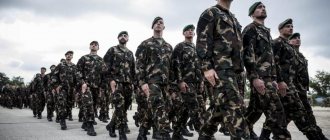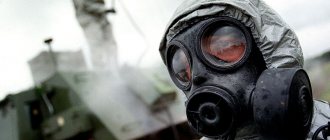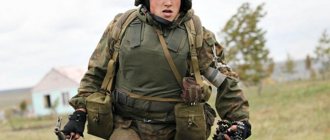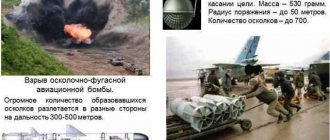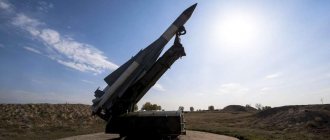Today, body armor is an integral part of a soldier’s equipment. But it was not always so. For a long time, a soldier on the battlefield was protected only by the thin fabric of a uniform or tunic.
A bulletproof vest is a personal protective equipment designed to protect a person (mainly his torso) from the effects of firearms and bladed weapons. It is made from various materials, the main feature of which is the ability to withstand the impact of a bullet, shrapnel or blade.
Nowadays, the value of a soldier’s life has increased many times over, so the creation of new, more reliable and advanced types is being carried out in many countries around the world. Very serious funds are spent on these developments.
There are different types of body armor, they are divided into classes: a light body armor will protect you from a pistol bullet, a knife and shrapnel, and heavy army body armor can stop a Kalashnikov assault rifle bullet. A concealed body armor vest can be worn under clothing, which is great for intelligence officers and bodyguards.
How effective are body armor on the battlefield? To give one example, according to statistics kept by the US Army, the use of body armor by military personnel reduced the number of injuries by 60%.
However, before talking about new developments, a few words should be said about the history of this personal protective equipment.
A little history
Around the middle of the 16th century, the development of firearms led to the fact that plate armor could no longer provide sufficient protection for a fighter. In addition, at this time Europe was moving to massive conscription armies, which were quite problematic to provide with high-quality armor. Only cuirassiers and sappers remained equipped with armor.
After the advent of machine guns and the improvement of artillery, troops began to suffer terrible losses. The problem of protecting infantrymen has become more acute. And then the military again remembered the cuirasses.
The revival of cuirass began at the turn of the 19th and 20th centuries. In 1905, the Russian military department ordered 100 thousand cuirasses from France. However, the foreign product turned out to be of poor quality and did not provide a sufficient level of protection for the soldier. There were also domestic developments in this area, and they were often superior to their foreign counterparts.
Many variations of cuirass were developed during the First World War. Almost all countries participating in the conflict did this. Cuirasses were most often equipped with sapper and assault units. Reviews for this remedy have been very mixed. On the one hand, the cuirass really protected against bullets, shrapnel and bayonet strikes, but on the other hand, its protective properties depended on the thickness of the metal. Light armor was practically useless, and too thick armor made it difficult to fight.
During the First World War, the British created something similar to modern body armor. It was called the “Dayfield” body shield, but this protective ammunition was not purchased by the English army. Those who wished could purchase it with their own money, and the body shield cost a lot. It was made of thick fabric; four compartments on the chest housed armored shields that held shrapnel and pistol bullets well. In addition, the shield was quite comfortable to wear.
Clever businessmen made good money on body shields; very often a family gave all their savings to protect their husband, father or son at the front.
Also worth mentioning is the Brewster Body Shield or “Brewster's Armor” - a protective set consisting of a solid helmet and cuirass. It provided good protection from bullets and shrapnel, but at the same time weighed 18 kg.
Development of body armor and cuirasses continued in the 30s and during the next world war, but it was never possible to create a truly light, comfortable and reliable body armor. We can mention the bulletproof steel breastplate, which was developed for assault brigades in the USSR, as well as special anti-fragmentation vests created for bomber crews in the UK.
In its modern form, body armor appeared in the early 50s; they were invented by the Americans and first used during the Korean War. They calculated that most injuries occur due to the impact of shell and mine fragments, which do not have too much kinetic energy. To protect against these factors, a body armor was created from several layers of high-strength fabrics - nylon or nylon.
The first mass-produced body armor, the M1951, was produced in quantities of 31 thousand pieces; it was made of nylon and could be reinforced with aluminum inserts. The weight of the bulletproof vest was 3.51 kg. Its creators did not set themselves the task of holding bullets, but it did a good job of protecting the fighter from shrapnel.
Mass distribution of body armor in the US Army began during the Vietnam War. The standard American army body armor of that time was the M-1969 (3.85 kg), made of nylon threads.
At the same time, the Americans began developing personal protective equipment for airplane and helicopter pilots.
In the 70s, the first body armor, Barrier Vest, was created in the United States for law enforcement officers.
In the USSR, the first 6B1 body armor was accepted for supply in 1957, but it was never put into mass production. It was planned to launch its mass production only in the event of a major war.
After the outbreak of hostilities in Afghanistan, the entire 6B1 stock was immediately transferred to the active army. However, this body armor turned out to be too heavy for difficult mountain conditions. It was decided to develop a new means of protection that would be lighter. This work was carried out by specialists from the Moscow Steel Research Institute. In the shortest possible time, they created the first generation Soviet body armor 6B2, which went through the entire Afghan war.
The main protective element of the 6B2 was small titanium plates placed in special pockets. The bulletproof vest reliably protected against shrapnel, but an AK-47 bullet penetrated it at a distance of 400-600 meters.
Over the course of several years of the Afghan war, several body armor were developed. The main direction of their improvement was to increase the protective characteristics. The Dushmans extremely rarely used artillery and mortars; the majority of injuries to Soviet soldiers were caused by small arms.
In 1983, the first Soviet bulletproof vest 6B3T appeared, in 1985 - 6B5 “Beehive”, a universal bulletproof vest that, depending on the configuration, could provide different levels of protection.
In the West, the development of body armor followed a slightly different path. The war in Vietnam can be called traditional (unlike Afghanistan) and the number of shrapnel wounds significantly exceeded losses from small arms. Therefore, the Americans were in no hurry to develop bulletproof vests. In addition, in the mid-70s, a new promising material for soft body armor, Kevlar, began to be produced on an industrial scale.
In the early 80s, a new soft Kevlar body armor - PASGT - was supplied to the American army. This body armor remained the main one for the American army until 2006. However, after the start of operations in Afghanistan and Iraq, the Americans faced the same problem as the Soviet troops faced in the 80s. For counterinsurgency operations, a bulletproof vest was needed that provided protection against small arms fire.
The first such body armor was the RBA, adopted by the US Army in the early 90s. Its main protective elements were small ceramic tiles placed in a vest made of nylon fabric. The weight of the bulletproof vest was 7.3 kg.
In 1999, the US Army received the OTV bulletproof vest, which protects against shrapnel. When installing additional protective panels, this body armor can also withstand machine gun bullets.
In 2007, MTV bulletproof vests with anti-fragmentation protection were accepted for supply to the US Army.
After the collapse of the USSR, work on new types of personal protection was frozen for many years. In Russia they were returned to them only in 1999. As part of the Barmitsa program, a whole range of body armor of various classes and characteristics was developed.
The first generation of army body armor.
As for vests for the army, work here almost until the end of the 70s never left the exploratory stage. The reasons are very strict military requirements for body armor and the lack of light armor materials. All previous models of body armor, both domestic and imported, used high-strength nylon or ballistic nylon as a base. Alas, these materials, while providing at best an average level of anti-fragmentation resistance, were not able to provide higher protection. In 1979, a limited contingent of Soviet troops was introduced into Afghanistan. The course of events showed that the troops had to not only provide assistance to the people of this country, but also fight armed rebels. The first series of new 6B2 body armor was quickly sent to Afghanistan. This body armor was created in 1978 at the Steel Research Institute together with the Central Institute of the Garment Industry (TsNIISHP) using design solutions of the ZhZT-71M body armor previously developed by order of the Ministry of Internal Affairs. In 1981, the body armor was accepted for supply to the USSR Armed Forces under the name Zh-81 (GRAU index - 6B2). Its protective composition consisted of titanium armor plates ADU-605-80 with a thickness of 1.25 mm (19 on the chest, including in the heart area in two rows of three plates in 2 layers) and a ballistic screen made of aramid fabric TSVM-DZh ( 30 layers). With a mass of 4.8 kg, the BZ provided protection from shrapnel and pistol bullets. He could no longer resist the bullets of long-barreled small arms (bullets from the 7.62x39 cartridge pierced the protective composition already at distances of 400-600 meters). By the way, an interesting fact. The cover of this bulletproof vest was made of nylon fabric, and it was fastened with the then newfangled “Velcro.” All this gave the product a very “foreign” look. Which gave rise to numerous rumors that these BZ were purchased abroad - either in the Czech Republic, or in the GDR, or even in some capital country.
Body armor Zh-81 (6B2)
The war continued, and practice showed that the Zh-81 body armor was not enough for optimal protection of manpower. Therefore, the troops began to receive 6B3TM body armor. The protective package consisted of 25 ADU-605T-83 plates made of titanium alloy VT-23 with a thickness of 6.5 mm (13 on the chest and 12 on the back) and fabric bags made of 30 layers of TVSM-DZh fabric (on the chest and back). This body armor weighed 12 kilograms, and due to its significant mass, it was replaced with 6B3TM-01 body armor with differentiated protection (chest - from small arms fire, back - from shrapnel and pistol bullets). The 6B3TM-01 body armor consisted of 13 ADU-605T-83 plates made of VT-23 titanium alloy with a thickness of 6.5 mm on the chest and 12 ADU-605-80 plates made of VT-14 titanium alloy with a thickness of 1.25 mm on the back; fabric bags made of 30 layers of TVSM-J fabric on the chest and back. This body armor weighed about 8 kilograms. The bulletproof vests consisted of a front and a back, connected in the shoulder area with a textile fastener and a belt-buckle fastening for height adjustment. The front and back of the product consist of covers in which fabric protective pockets and blocks of pockets with armor elements are located. There are pockets on the outside of the covers: on the front - for 4 magazines and a chest pocket, on the back - for 4 hand grenades and a raincoat. An interesting feature of the 6B3TM and 6B3TM-01 vests is that they used titanium armor with hardness differentiated by thickness. Variation in hardness in titanium was achieved using a unique technology for processing it using high-frequency frequencies. These body armor vests were adopted in 1985 under the designations Zh-85T (6B3TM) and Zh-85T-01 (6B3TM-01).
Body armor 6B3TM-01
In 1984, the 6B4 body armor vest was put into mass production. It was put into service in 1985 under the designation Zh-85K. The 6B4 body armor used ceramic plates, unlike the 6B3 series body armor, which used titanium. Due to the use of ceramic protective elements, 6B4 body armor provides protection against bullets with a heat-strengthened core and armor-piercing incendiary bullets. The 6B4 body armor provided all-round protection from bullets and shrapnel, but at the same time its weight was from 10 to 15 kilograms (depending on the modification), and following the path of the 6B3 body armor, a lightweight version 6B4-01 (Zh-85K-01) was created with differentiated protection (chest - from small arms bullets and shrapnel, back - from pistol bullets and shrapnel). The 6B4 series of body armor included several modifications that differed in the number of ceramic plates: 6B4-O (10.5 kg), 6B4-P (12.2 kg), 6B4-S (15.6 kg), 6B4-01-O ( 7.6 kg), 6B4-01-P (8.7 kg). The protective elements consisted of 30 layers of TVSM fabric and ceramic plates ADU 14.20.00.000 made of boron carbide: 6B4-O - 16 each on the chest and back; 6B4-P - 20 each on the chest and back; 6B4-S - 30 on the chest and 26 on the back. The 6B4-01 vests have ADU-605-80 plates on the back made of VT-14 titanium alloy with a thickness of 1.25 mm (6B4-01-O - 12 plates). 6B4 consists of a front and a back, connected in the shoulder area with a textile fastener and a belt-buckle fastening for height adjustment. The front and back of the product consist of covers in which a fabric protective pocket (back), a pocket (front) and blocks of pockets with armor elements are located. The product is equipped with two spare armor elements. The case of the product 6B4, unlike the case 6B3TM, does not have a chest pocket and has an elongated chest section, providing protection for the lower abdomen. Later models featured a splinter collar.
Body armor 6B4-01
The final series of Russian vests of the first generation is the 6B5 series of body armor. This series was created by the Steel Research Institute in 1985 after conducting a series of research works to determine standardized standard means of personal armor protection. The 6B5 series was based on vests already developed and in use and included 19 modifications, differing in the level of protection, area, and purpose. A distinctive feature of this series is the modular principle of construction of protection. those. each subsequent model in the series could be formed from unified protective units. The latter included modules based on fabric structures, titanium, ceramics and steel.
Body armor 6B5-19
The 6B5 body armor was adopted for service in 1986 under the designation Zh-86. The new vest was a case in which soft ballistic screens made of TSVM-DZh fabric, etc. were placed. circuit boards, in the pockets of which armor plates were placed. The following types of armor panels could be used in the protective composition: ceramic ADU 14.20.00.000, titanium ADU-605T-83 and ADU-605-80 and steel ADU 14.05 with a thickness of 3.8 mm. Early models of body armor had covers made of nylon fabric in various shades of green or gray-green. There were also batches with covers made of cotton fabric with a camouflage pattern (two-color for the KGB and Air Force units of the USSR Ministry of Internal Affairs, three-color for the Airborne Forces and Marine Corps). After the adoption of the general military camouflage pattern "Flora", the 6B5 body armor was also produced with the same camouflage pattern.
Body armor 6B5 in Flora coloring
The 6B5 bulletproof vest consists of a front and a back, connected in the shoulder area with a textile fastener and a belt-buckle fastening for height adjustment. The front and back consist of covers in which fabric protective pockets and blocks of pockets and armor elements are located. The protective properties are maintained after exposure to moisture when using water-repellent covers for protective pockets. The body armor is equipped with two water-repellent covers for protective pockets, two spare armor elements and a bag. All models of body armor are equipped with a fragmentation collar. On the outside of the body armor cover there are pockets for machine gun magazines and other weapons. There are bolsters in the shoulder area that prevent the gun belt from slipping off the shoulder. Main modifications: 6B5 and 6B5-11. Provides protection for the chest and back from fragments and bullets from PM and APS pistols. The material of the protective package is 30 layers of TSVM-J fabric. Weight - 2.7 and 3.0 kg, respectively. 6B5-1 and 6B5-12. Provides protection for the chest and back from fragments and bullets from PM, APS, PSM and TT pistols, and has enhanced anti-fragmentation resistance. The material of the protective package is titanium plates ADU-605-80 with a thickness of 1.25 mm and 30 layers of TSVM-DZh fabric. Weight - 4.7 and 5.0 kg, respectively. 6B5-4 and 6B5-15. Provides protection to the chest and back from shrapnel and small arms bullets. The material of the protective package is ceramic plates ADU 14.20.00.000 made of boron carbide (22 in the pockets of the front module and 15 in the back module) and 30 layers of TSVM-J fabric. Weight - 11.8 and 12.2 kg, respectively. 6B5-5 and 6B5-16. Designed to protect: chest - from small arms bullets and shrapnel; backs - from shrapnel and pistol bullets. Protective package material: chest module - 8 titanium armor elements ADU-605T-83 with a thickness of 6.5 mm, 3-5 titanium armor elements ADU-605-80 with a thickness of 1.25 mm and a fabric package of 30 layers of TSVM-Dzh fabric; back section - 7 titanium armor elements ADU-605-80 with a thickness of 1.25 mm and a fabric package of 30 layers of TSVM-Dzh fabric. Weight - 6.7 and 7.5 kg, respectively. 6B5-6 and 6B5-17. Designed to protect: chest - from small arms bullets and shrapnel; backs - from shrapnel and pistol bullets. Protective package material: chest module - 8 steel armor elements ADU 14.05. 3.8 (4.3) mm thick, 3-5 titanium armor elements ADU-605-80 1.25 mm thick and a fabric package of 30 layers of TSVM-DZh fabric; back section - 7 titanium armor elements ADU-605-80 with a thickness of 1.25 mm and a fabric package of 30 layers of TSVM-Dzh fabric. Weight - 6.7 and 7.5 kg, respectively. 6B5-7 and 6B5-18. Designed to protect: chest - from small arms bullets and shrapnel; backs - from shrapnel and pistol bullets. Protective package material: chest module - titanium plates ADU-605T-83 with a thickness of 6.5 mm and 30 layers of TSVM-DZh fabric; spinal module - 30 layers of TSVM-J fabric. Weight - 6.8 and 7.7 kg, respectively. 6B5-8 and 6B5-19. Designed to protect: chest - from small arms bullets and shrapnel (3rd class of protection of the Russian Defense Ministry); backs - from fragments and bullets of PM and APS pistols. Protective package material: chest module - 6 steel plates ADU 14.05 with a thickness of 3.8 (4.3) mm and 5-7 titanium plates ADU-605-80 with a thickness of 1.25 mm and a fabric package of 30 layers of TSVM-Dzh fabric; the spinal module is a fabric package of 30 layers of TSVM-J fabric. Weight - 5.7 and 5.9 kg, respectively. Body armor 6B5-11 and 6B5-12 had anti-fragmentation protection. They were intended for crews of artillery guns, missile systems, self-propelled guns, military headquarters, support units, etc. Body armor 6B5-13, 6B5-14, 6B5-15 provided all-round bulletproof protection and were intended for l/s units performing short-term special combat missions (assault, etc.). Body armor 6B5-16, 6B5-17, 6B5-18, 6B5-19 with differentiated protection were intended for combat units of the Ground Forces, Airborne Forces and Navy Marines. After the 6B5 series body armor vests were accepted for supply, it was decided to leave the remaining body armor vests accepted for supply with the troops until they were completely replaced. But in fact, the 6B3TM-01 body armor remained in the army in the 90s, where it was actively involved in local wars and conflicts on the territory of the former USSR. The 6B5 body armor vest was produced until 1998, and was removed from supply in 2000, leaving the vests in service with the troops until they were completely replaced with modern products. It follows from this that the body armor of the “Beehive” series (6B3, 6B4, 6B5) in various modifications are still in some units.
New country - new body armor.
During the turbulent 90s, the development of army personal protective equipment stalled, and funding for many promising body armor projects was curtailed. But rampant crime in the country gave impetus to the development and production of personal armor protection for individuals. Demand for them in these early years greatly exceeded supply. It is no coincidence that in Russia, companies offering these products began to appear like mushrooms after rain. After only 3 years, the number of such companies exceeded 50. The apparent simplicity of body armor brought a lot of amateur companies, and sometimes outright charlatans, into this area. As a result, the quality of body armor that flooded the Russian market has dropped sharply. While evaluating one of these “body armor,” experts from the Steel Research Institute once discovered that it used ordinary food-grade aluminum as protective elements. Obviously, such a vest did not protect from anything other than being hit by a ladle. Therefore, in 1995, a significant step was taken in the field of personal armor protection - the appearance of GOST R 50744-95 (link), which regulates the classification and technical requirements for body armor.
Progress did not stand still, and the army needed new body armor. The concept of BKIE (basic set of individual equipment) appeared, in which body armor played a significant role. The first project of the BKIE “Barmitsa” contained the theme “Visor” - a new army body armor to replace the body armor of the “Beehive” series.
Body armor 6B13
As part of the “Visor” theme, body armor vests 6B11, 6B12, 6B13 were created and put into service in 1999. Uncharacteristically for the Soviet period, these body armor were developed and produced by a significant number of organizations and differ significantly in their characteristics. Body armor 6B11, 6B12, 6B13 are produced or were produced by the Research Institute of Steel, TsVM Armokom, NPF Tekhinkom, JSC Kirasa. In general, 6B11 is a body armor of the 2nd protection class, weighing about 5 kg. 6B12 - provides protection for the chest according to the 4th protection class, for the back - according to the second. Weight - about 8 kg. 6B13 - all-round protection of the 4th class, weighing about 11 kg.
Upgraded 6B13 body armor with the ability to attach pouches of the UMTBS or MOLLE system
.
Body armor of the “Vasor” series consists of chest and back sections connected in the shoulder area with pile fasteners and a belt-buckle connection in the belt area, which allow the body armor to be adjusted according to height. In the waist area, the sections are connected using a pile fastener and a belt with a carabiner and a hook. The sections consist of external covers, inside of which there are fabric protective screens with external pockets for placing armor elements (two on the chest section and one on the back). The chest section has a folding apron to protect the groin. On the reverse side of the chest and back sections there are dampers that reduce the impact of concussion. The damper design provides natural ventilation of the vestibule space. The bulletproof vest has a collar, consisting of a front and a back part, which serves to protect the neck from fragments. Connecting these parts with pile fasteners allows you to adjust their location. The adjusting units of the body armor are compatible with the adjusting units of the 6Sh92-4 transport vest, designed for placement and transportation of equipment elements from the wearable part of combat sets of individual equipment of the main military specialties of the Ground Forces, Airborne Forces, Navy Marines, etc. Body armor, depending on the modification, is equipped with quickly replaceable fabric, steel and (or) organic-ceramic armor panels "Granit-4". The design of the protective package eliminates the possibility of ricocheting at bullet approach angles of 30-40 degrees from the normal. Body armor provides protection for the shoulders and neck of a serviceman. The top of the body armor has a camouflage protective coloring, water-repellent impregnation and does not support combustion. All materials from which BZ are produced are resistant to aggressive liquids; non-toxic, non-flammable, explosion-proof; do not irritate the skin in direct contact with the human body. Body armor can be used in all climatic zones and retain their protective properties at temperatures from minus 50°C to plus 50°C, as well as when exposed to moisture. Continuous wearing time, no less: 6B12-1 - 24 hours, 6B13 - 5 hours.
General structure and classification of body armor
For the production of modern body armor, various high-strength materials are used. Typically these are synthetic threads (so-called ballistic fabrics), metals (titanium, steel) or ceramics (aluminum oxide, boron or silicon carbide). If previously body armor could be divided into “soft” (anti-fragmentation) and “hard” (for protection against bullets), now this is not easy to do.
Modern body armor usually has a modular structure, which allows you to enhance the protection of certain areas with the help of special armor inserts. A light body armor may not have armor inserts and serve only as protection against knives and bullets from short-barreled weapons. But it can be used as a concealed body armor, which is perfect for law enforcement officers, bodyguards, and cash collectors.
Any body armor should be comfortable and practical to use, its fabric elements should be highly durable, comply with its protection class (more on this below) and at the same time have as little weight as possible.
We can name the following areas in which body armor is currently being improved:
- Manufacturers began to move away from the idea of creating a universal body armor suitable for any “occasion”. Instead, highly specialized means of protection are being created.
- Increasing the level of protection and reducing the weight of the product. This is achieved through the use of more advanced materials and improved design of body armor.
- Differentiation of protection level for different zones.
- Introduction into body armor of protection against non-ballistic factors of damage: fire or electric current.
- The trend is towards increasing the protection area. The latest models of body armor usually include protection for the shoulders, collar area and groin. Side protection is an almost mandatory feature of the latest body armor vests.
- They try to include elements into the design of body armor to accommodate weapons, ammunition, medicines and other things needed by a soldier - such as dry rations.
The main criterion for choosing a body armor is its protection class. It depends on what kind of bullet or fragment it can withstand. However, not everything is so simple here either. Here are the most common types of body armor protection classifications:
- GOST R 50744–95/1999. This standard for body armor was adopted by the Russian State Standard in 1999.
- GOST R 50744–95/2014. Russian standard adopted by the State Standard of Russia in 2014.
- CEN is a pan-European standard.
- DIN is the German police body armor protection standard.
- NIJ is the body armor standard of the American National Institute of Justice.
Now let's look at several classes of body armor protection in accordance with different standards. GOST R 50744–95/2014 (Russia):
- 1 class. Must protect against a Stechkin pistol bullet (APS) 9x18 mm with a steel core (Pst). Bullet speed 345 m/s, distance 5 meters.
- 2nd grade. Pistol "Vector" (SR-1), cartridge 9x21 mm, lead bullet with a speed of 400 m/s, distance 5 meters.
- 3rd grade. Body armor of this class should protect against a bullet from a 9x19 mm Yarygin pistol with a heat-strengthened steel core. Bullet speed 455 m/s, distance 5 meters.
- 4th grade. Should provide protection against a shot from an AK-74, 5.45x39 mm cartridge, bullet with a heat-strengthened steel core, bullet speed 895 m/s, distance 10 meters. And also from a shot from an AKM, cartridge 7.62x39 mm, bullet with a steel heat-strengthened core, speed 720 m/s, distance 10 meters.
- 5th grade. SVD rifle, cartridge 7.62x54 mm, bullet with a steel heat-strengthened core, speed 830 m/s, distance 10 m.
- 6th grade. Body armor of this class must withstand a shot from an OSV-96 or V-94 rifle of 12.7 mm caliber. Cartridge 12.7x108 mm, bullet with a heat-strengthened steel core. Speed 830 m/s, distance 50 meters.
Body armor protection classes from the US National Institute of Justice (NIJ):
| Class | Subclass | Caliber | Chuck type | Weight (g) | Max bullet speed (m/s) |
| I | 1 2 | special 38 22 | RN/ lead bullet LRHV/ lead. bullet | 10.20 2.60 | 259 320 |
| II-A | 1 2 | .357 Magnum 9 mm | JSP FMJ | 10.20 8.00 | 381 332 |
| II | 1 2 | .357 Magnum 9 mm | JSP FMJ | 10.20 8.00 | 425 358 |
| III-A | 1 2 | .44 Magnum 9 mm | SWC/ lead FMJ bullet | 15.55 8.00 | 426 426 |
| III | – | 7.62x51mm NATO | FMJ | 9.70 | 838 |
| IV | – | .30-06 Springfield | AP | 10.80 | 869 |
Modern general-arms body armor of the Russian army
Soldiers wearing 2B23 body armor - until recently one of the most common models. Photo by the Russian Ministry of Defense
Currently, the Russian army is supplied with a whole range of general-arms body armor. These products have been developed over the past several decades, and each new project has used the latest technologies and materials. Such consistent development has made it possible to create designs with high levels of protection and ergonomics.
From the late nineties
Until the beginning of the 2000s, the main body armor (BZ) of the Russian army was the 6B5 product in several modifications.
In 1999, the 6B13, developed by NPF Tekhinkom, was put into service. Subsequently, mass production made this type of vehicle one of the main ones in the army. Despite the emergence of newer and more effective means of protection, 6B13 still remain in limited service. BZ 6B13 was built according to a traditional design, but using modern materials. The vest completely covered the user's torso and protected the neck. fasteners were provided with the ability to adjust for height and volume. The chest and back sections of the vest were made on the basis of fabric armored packages. There was one pocket-cover for an armor plate on the chest, and two on the back. In the original version, 6B13 was equipped with Granit-4 ceramic-composite plates, which provided class 4 protection.
Product 2B13. The chest cover for the armor element is clearly visible. Photo: Guns.allzip.org
The fabric elements of the 6B13 product provided all-round protection against light, low-speed fragments; the area of such protection is up to 55 sq.dm, depending on the size of the vehicle. Chest elements "Granit-4" were produced in sizes from 7 to 9 sq.dm. Dorsal - up to 8.5 sq. dm in total. The total weight of the vest reached 11 kg.
As production and use continued, improved versions of the body armor were offered. Reinforced armor elements corresponding to protection classes 5 and 6 were developed. Product 6B13M retained the standard elements, but received covers with MOLLE / UMTBS slings.
Modular principle
In 2003, the BZ 6B23 developed by NPP KLASS was adopted for service. This body armor quickly replaced a number of outdated models and became one of the main products of its class in our army. This status generally continues to this day.
6B23 in different versions. Photo Rusdarpa.ru
A characteristic feature of the new vest is improved ergonomics and a modular approach to the formation of protection. In the basic modification 6B23, such body armor uses fabric elements based on 30 layers of TSVM-2 material. They are located on the chest, back and sides. The 6B23-1 configuration provides for the installation of a steel chest armor plate, and the 6B23-2 uses a Granit-4M ceramic element on the chest and steel on the back. Fabric blocks provide class 2 protection – against pistol bullets; steel and ceramic - 3 and 4 classes. The total area of the 6B23 vest reaches 48 sq.dm. Of these, 8 sq.dm each falls on the thoracic and dorsal elements. Weight, depending on the panels used, from 4 to 10.2 kg.
Increased protection
In 2010, serial production of the 6B43 type BZh developed by Tekhinkom began.
When creating this product, the modular principle was again used with the possibility of obtaining different levels of protection. In addition, measures were taken to increase the protected area: the vest received shoulder pads, giving it a distinctive look. In the basic configuration, 6B43 includes chest, back and side sections, made in the form of a single product. They can be joined by shoulder pads and a groin apron. The textile vest contains protective blocks made of “Russar” fabric, corresponding to class 1. The chest, two back and two side ceramic panels of the Granite series of class 5 can also be installed in the corresponding pockets.
Body armor 6B43 with shoulder pads and apron. Photo of NPF "Techinkom"
Depending on the size, the fully equipped BZ 6B43 can have a total protection area of up to 69.5 sq.dm. Of this, up to 30 sq.dm is made up of ceramic or fabric elements. The weight of the body armor without armor is 4.5 kg. The product with chest and back panels weighs 9 kg, and the complete set weighs 15 kg.
By now, 6B43 has become widely used and has become one of the main domestic body armor. These are the types of products that can most often be seen on military personnel working in hot spots or dangerous areas.
Body armor for "Ratnik"
The new military combat equipment (BEV) “Ratnik” includes several protective equipment of different classes. Thus, a combat protective kit (CPS) 6B49 was created in the form of overalls or a set of jacket and trousers with flexible fabric protection. The UPC can withstand hits from shrapnel and pistol bullets. The Ratnik BEV also includes a 6B47 helmet and a modern 6B45 body armor.
Product 6B45 without additional elements. Photo Vitalykuzmin.net
BZ 6B45 in its architecture generally repeats previous products, but has a number of design and technological differences. The chest, back and side sections, as well as neck protection, are preserved. Shoulder pads and an apron are not included in the basic configuration. Fabric armor packages provide class 1 protection. Ceramic-composite elements "Granit-5" protect according to class 5A. The total area of the body armor is 45 sq. in., of which at least 25.5 sq. in. is accounted for by armor elements. The weight of the product with ceramic protection is 8.7 kg.
An assault version of the body armor has been developed - 6B45-1. It is distinguished by the presence of shoulder pads and an apron with bulletproof protection, additional shock absorbers and reinforced ceramic panels. In this case, “Granite-6” elements corresponding to class 6 are used. A BZ is also available with a buoyancy kit 6B45-2.
Development trends
The modern history of domestic general-arms body armor dates back to the early eighties, when the 6B2 product was created and put into service. Just a few years later, new models appeared with certain differences and advantages. The process of modernizing existing models and creating new ones continues to this day and leads to new interesting results.
Military personnel equipped with "Ratnik" with 6B45 body armor and 6B49 BKZ. Photo by the Russian Ministry of Defense
Over the past decades, different architectures have been proposed and implemented in different designs, and new materials have been introduced. At the same time, a number of main trends were observed. Thus, the BZ 6B2 from the early eighties protected a person using a woven block made of aramid fiber (for the first time in domestic practice) and using titanium plates.
Subsequently, this scheme was maintained, and in the nineties, bullet-proof armor with ceramic-composite elements appeared, combining a higher level of protection and lower weight. The combined structure with fabric and ceramic armor elements is actively used in modern designs, but they use modern materials with improved characteristics. The most advanced armor panels for BD provide protection against armor-piercing rifle bullets - although they are characterized by large mass and high cost.
In parallel with the protection materials, the ergonomics of the products were improved. Also, in addition to the chest and back sections, new protective elements were introduced - collars, shoulder pads, side sections and aprons of various designs. These elements made it possible to increase the protection area without an unacceptable increase in mass.
Possible appearance of promising means of protection. Photo "Rostec"
It is known that work is continuing to improve existing designs of body armor and to create new ones. Advanced materials with reduced weight and increased strength are being developed and tested. It is possible to change the approach to the architecture of security tools. In particular, the idea of protective overalls with armored elements covering the maximum area may be developed.
It is expected that body armor and other products based on new technologies and materials will be included in the promising Sotnik BEV. What its elements will turn out to be and how they will differ from modern products is unknown. But in terms of basic characteristics, they will certainly surpass existing means of protection.
What's next?
What will body armor look like in the foreseeable future? It is difficult to give an exact answer to this question. There are several interesting developments that could become a reality in the coming years.
Spider Web Body Armor
Americans are doing similar research. It has long been known that spider silk is one of the strongest compounds in nature. It is slightly inferior to Kevlar, but much more elastic than the latter. The US Military Department has allocated 100 thousand dollars to continue the research, and if they are successful, the scientists will be allocated another million dollars.
Liquid body armor
Another interesting direction in the field of creating perfect armor is the development of body armor based on a special gel, which turns into a solid state upon impact. Thus, it seems to absorb the energy of a bullet or fragment.
Similar work is being carried out in several countries at once, and the developers promise to demonstrate practical results in the near future. In physics, such gels are called “non-Newtonian liquids.”
Experiments have shown that such a “gel” body armor is not inferior in its protective properties to thirty layers of Kevlar fabric.
The evolution of domestic body armor: from cuirass to “Ratnik”
Nowadays, the value of a soldier’s life has increased many times over, so many countries around the world are working on the creation of new, more reliable and advanced types of individual human protection. Today, body armor is an integral part of a soldier’s equipment; it is impossible to imagine sending a soldier into battle without protective equipment.
Since time immemorial, man has tried to protect himself from the enemy’s arrow, sword or spear. Thick animal skins, metal scales, chain mail, and special steel armor were used. The spread of firearms, their use in warfare and the sharply increased power of destructive elements caused armor and armor to fall out of use, since they ceased to be an obstacle for bullets and only burdened their owners. Russia was prompted to develop the first army body armor by the results of the Battle of Inkerman, which took place on October 24, 1854, in which Russian infantry were shot as targets in a shooting range. On the third day after receiving a report on the battle, Russian Emperor Nicholas I wrote: “It is extremely unfortunate that Prince Menshikov’s intention was not successful, having cost so much precious blood.” The events caused the commanders to think not only about changing the traditional tactics of military operations, but also about protecting the soldiers. After all, the soldier was protected from the deadly metal only by the thin cloth of his uniform or tunic.
She was the first to try to return the shield on the battlefield. In Russia in 1886, steel shields designed by Colonel Fischer and Captain Holstein were tested, which turned out to be ineffective: a bullet fired from a new rifle could easily shoot through the shield. Another project turned out to be more promising - cuirasses (shells), which were part of the ceremonial uniform of soldiers of cuirassier regiments, began to return to the battlefield. During the First World War, cuirasses and similar means of protection were used not only by Russia, but also by other countries. Practical testing has shown both the advantages and disadvantages of these types of protection. Of course, it protected the torso and vital organs well. But the durability of the cuirass directly depended on the thickness. The light and thin one did not protect at all from large fragments and bullets, and the thicker one, due to its weight, did not allow fighting.
A relatively successful compromise was found in 1938, when the Red Army received the first experimental steel breastplate, CH-38 (SN-1). This body armor protected only the chest, stomach and groin of the fighter. Thanks to savings on back protection, it became possible to increase the thickness of the steel sheet without overloading the person. However, all the weaknesses of this solution were revealed during the Finnish campaign, and therefore in 1941 the development of the CH-42 (CH-2) bib began. The creator of the modernized version was the armor laboratory of the Institute of Metals under the leadership of M.I. Koryukov, one of the authors of the legendary Soviet steel helmet. The breastplate protected against shrapnel and machine gun fire (at a distance of more than 100 meters), but could not withstand shots from a machine gun or rifle.
The assessment of the effectiveness of such a bib by front-line soldiers was the most contradictory - from admiration to complete rejection. However, after analyzing the reasons for such diametrically opposed opinions, the following paradox can be identified: the breastplate was valued in the assault units that “took” large cities, but in the units that captured field fortifications, the new product received negative reviews. The “shell” protected the chest from shrapnel and bullets while the soldier was running or walking, as well as during hand-to-hand combat, so it was necessary in battles on city streets. At the same time, in the field, attack sappers, as a rule, moved on their bellies. In this case, the steel breastplate was an unnecessary hindrance. In units that fought in sparsely populated areas, breastplates first migrated to battalion warehouses, and later to brigade warehouses.
From the memoirs of front-line soldiers: “Senior Sergeant Lazarev, rushing forward, ran to the German dugout. A fascist officer jumped out to meet him, unloading the entire clip of his pistol point-blank into the stormtrooper’s chest, but they did not take the daredevil’s bullets. Lazarev struck a German officer on the head with his butt, reloaded his machine gun and entered the dugout. There he killed several fascists, who were simply distraught by what they saw: the officer shot at the Russian at point-blank range, but he remained unharmed.” There were many similar cases during the battles, and the Germans who were captured many times asked to explain the reason for the “indestructibility of the Russian soldier.” In 1946, the CH-46 model entered service, becoming the last steel breastplate.
World practice has shown that it is necessary to create effective armor protection for ordinary soldiers and protect them on the battlefield from shrapnel and bullets. The first domestic body armor was created by the All-Union Institute of Aviation Materials. Then they made about one and a half thousand copies and stored them in warehouses. It was decided that mass production of body armor would only be launched in the event of a threat. Since the mid-70s, the Moscow Research Institute of Steel was entrusted with a large cycle of work on equipping the KGB special forces, which later became known as the Alpha group. The care with which new personal armor protection products were created and tested remains respectable to this day. The most complex ergonomic and medical tests, scrupulous assessment of operating parameters in various unexpected situations, a huge number of tests of the protective qualities of various armor options were the norm here.
In the early 90s, the development of personal protective equipment for the Armed Forces stalled, and funding for a large number of promising projects was curtailed. However, even in these difficult years for the country, progress did not stand still. A concept arose as a “basic set of individual equipment” (BKIE), in which a significant role was assigned to body armor. The first BKIE “Barmitsa” included the “Zablo” project.
In the 21st century, a new stage in the development of basic sets of individual equipment has begun - the Barmitsa-2 project. In 2004, within the framework of this project, the Permyachka-O combat protection kit (combat protective kit) was accepted for supply, designed to protect against damage to military personnel by small arms, all-round protection from shell fragments, grenades, mines, from local armored concussion injuries, and atmospheric exposure , thermal factors, mechanical damage. The protective properties of the kit do not change at temperatures from -40 to +40 C and are also preserved after prolonged exposure to moisture. The Permyachka-O BZK was tested in the North Caucasus during hostilities. There he showed a generally positive result. Minor shortcomings mainly concerned the ergonomics of individual elements of the kit.
The next stage in the development of domestic army body armor was the development and implementation of the basic set of individual equipment “Ratnik”, which exceeded the effectiveness of “Barmitsa” by 10 times. The combat equipment of the “Ratnik” kit includes an individual tactical helmet, a ceramic body armor with armor panels of the fifth and sixth protection classes that can withstand a bullet fired from a Dragunov sniper rifle from a distance of ten meters, as well as a reinforced 7.62 mm caliber bullet for a Kalashnikov assault rifle , active headphones, tactical glasses and gloves, shields for elbow and knee joints. Body armor is equipped with a modular system and it is easy to install additional sections for magazines and pouches on them, designed to relieve the total wearable weight of weapons and means of protection against NBC contamination.
As of the beginning of 2022, in military units of the Western Military District, more than 80% of outdated models of body armor were replaced with “Ratnik” personal protective equipment. This re-equipment of the Russian Armed Forces is taking place within the framework of combined arms modernization. “In 2022, the current pace of rearmament of the army and navy will continue, and the level of equipment with modern weapons and equipment should be at least 70% and be steadily maintained in the future,” the Russian Ministry of Defense said. For certain branches and branches of the Armed Forces, this figure has already been practically achieved.
What will body armor look like in the foreseeable future? It is difficult to give an exact answer to this question. There are several interesting developments that could become a reality in the coming years. Today, the largest manufacturers and developers of body armor, such as NPO Tekhnika, Research Institute of Steel, NPO Spetsmaterialy, TsVM Armocom, and CJSC Kirasa, are searching for modern protective materials and structures and exploring new principles of individual armor protection. There is every reason to believe that the expected increase in destruction power will not take domestic UPC developers by surprise.
Body armor 6B45/43. Review.
The “Special” militia is in touch, sharing his experience. Link to his post: https://bskam.livejournal.com/59277.html#cutid1
The text below has been edited and lightly rewritten.
First, about the materials from which the armor is made. - The materials are strong. — High wear resistance. - Reliability. — Made with high quality, conscientiously.
There are, of course, nuances, not without peculiarities, but in general, in practice, both the 45th and the 43rd, which are essentially the same body armor, have shown their pros and cons. The disadvantages are small, they can be corrected if you have direct hands. In general, 6B45/43 body armor satisfies the need for personal protective equipment for ten years to come. Since we are talking about the 43rd, I will describe the differences between the 45th and the 43rd.
a) Aramid is sewn in.
In 45, the aramid is non-removable.
Aramid without waterproof bags, so that's a nuance. We must remember that when wet, a drop in performance occurs; in the long term, regular wetness leads to damage to the aramid fabric, so we protect our body armor from exposure to moisture. It’s best to rip the fabric from the cover and pack it in plastic, if it’s quick and simple. Option two, which is more complicated, is to cover it in a couple of layers with reinforced tape. Important
- you need at least a couple of slots for ventilation.
The best option is to tape a fabric cover in the shape of an aramid bag, and then put the aramid into this cover. Then ventilation will prevent the formation of condensation. Since we use body armor in different climatic conditions, we don’t put off the problem, we solve it right away. Moreover, in any climate zone there is a temperature difference. b) Bondage.
There is a clear difference - on the 45th there is a Velcro fastening, on the 43rd it is on fastex with a tightening. These are the main differences. That is, the armored vehicles are practically twins - the choice is from at least two candidates

